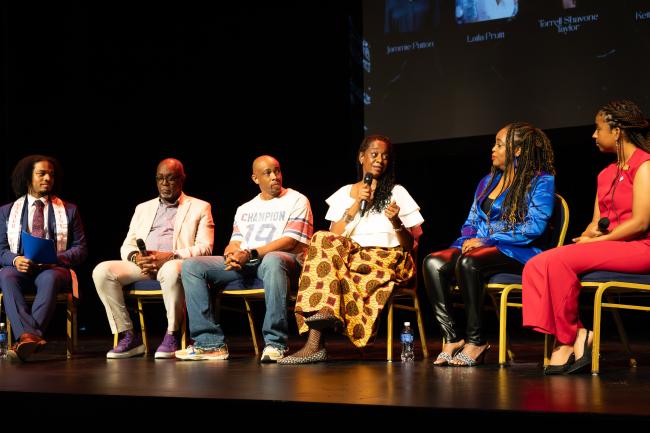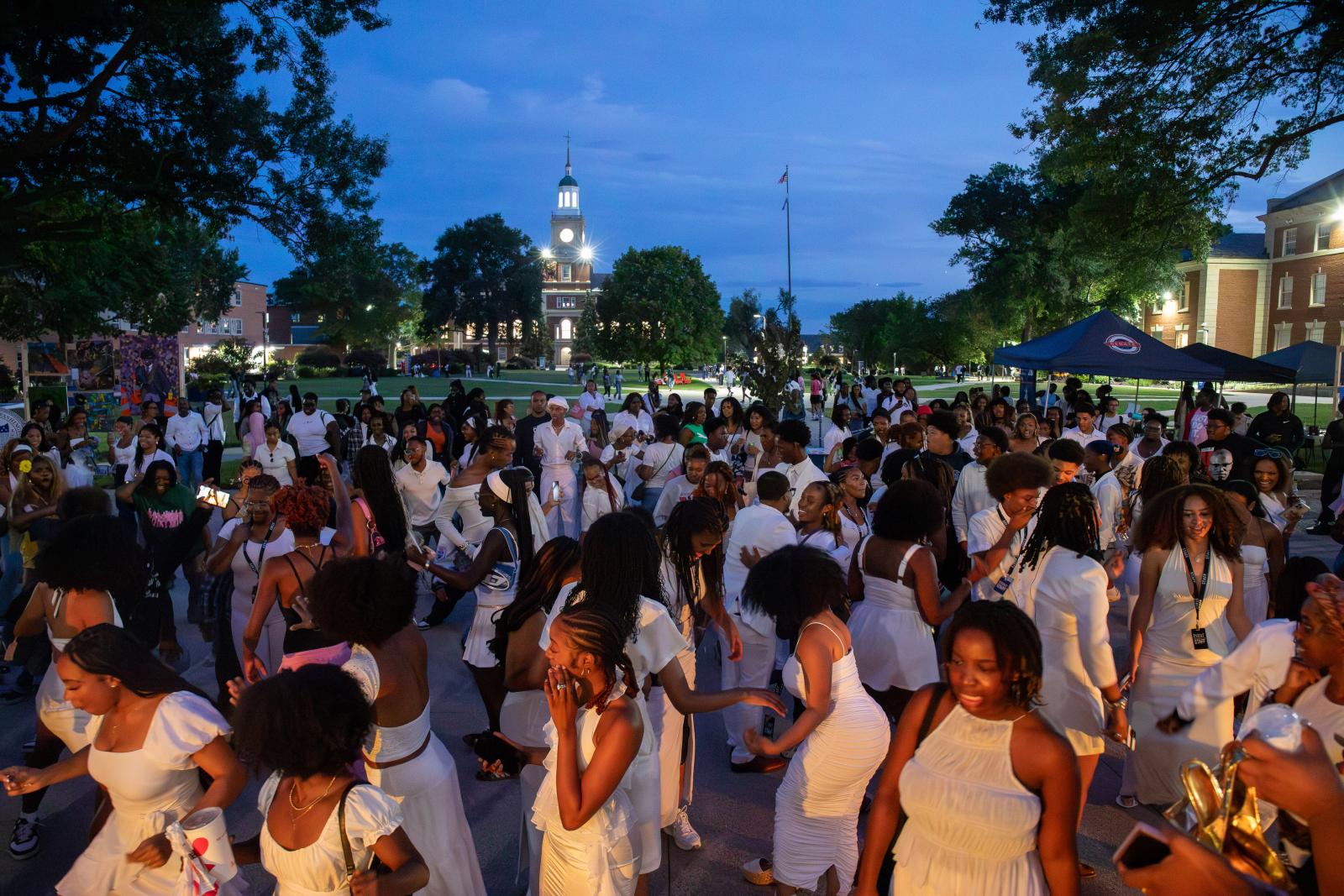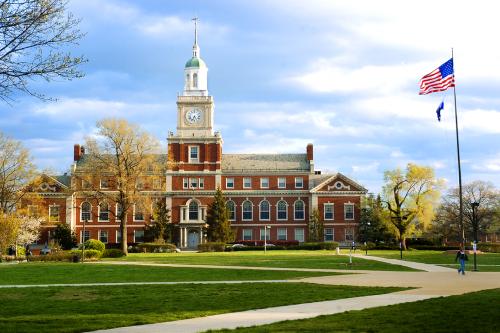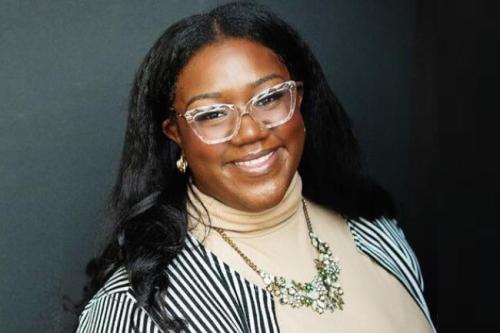Last week, Howard students and alumni celebrated the life and work of the late Chadwick A. Boseman, the celebrated actor, writer, and director and namesake of the Chadwick A. Boseman College of Fine Arts (CABCoFA). Over two days, they honored his lasting impact on Howard and the art world through a panel discussion featuring Howard alumni and current students, who also showcased their own work from across disciplines on the Yard.
The Artist, The Advocate, the Alumnus
The two-day celebration was organized by the CABCoFA student council, with support from Chad Eric Smith, the college’s director of marketing and communications. Events kicked off Wednesday night with “Chadwick: The Artist, the Advocate, the Alumnus,” spearheaded by Noel Desire Best, junior musical theatre major and vice president of the council.
“To me personally, it is a day to personally honor Chadwick Boseman,” said Best, discussing what the actor’s legacy means to her. “I feel like his role in Hollywood and just in film and theatre has been so profound. It definitely inspired me to come to this college, and I’m so grateful that as a student I get to continue that legacy, continue to explore my art in different ways.”
The evening opened with a screening of “Who’s Next,” a dance concept short film shot on Howard’s campus and created by Take 6 Productions, a group of six junior dance majors and filmmakers with the mission “to entertain, inspire, and promote the value of performance arts through live theatre and film production.” As credits rolled, the film featured Boseman’s colleagues, friends, and family reminiscing on his dedication to his craft and his overwhelming generosity.
Following the screening, Quinn Taylore, senior actor major and “Mr. Chadwick A. Boseman College of Fine Arts,” welcomed the discussion panel, made up of actor and director Jammie Patton, actor and current Howard senior Laila Pruitt, director and producer Torell Shavone, drummer and actor Jason Jones, and singer, drummer, and founding member of The Blackbyrds, Keith Killgo. The panel discussed Boseman’s legacy and impact on how they approach art.
“My friends and I joke all the time, it was our freshman orientation, and we walk into CoFA and we saw all the pictures of alums, and I go ‘I can feel the inspiration flowing up through the floor,’” said Pruitt about seeing Boseman’s name when she first started at Howard. “Just seeing someone’s name on the school and knowing this is the name of someone who I’d studied … You know, it’s 3 a.m. and I’m on my computer looking up scenes from ‘Black Panther’ or ‘42’ — and now I’m going to his namesake, his school, it’s just really inspiring.”
For Patton, who knew Boseman personally and took classes with him, seeing his name on the building is “surreal but not surprising.”
“I always expected that brother to do amazing things,” she said. “He could walk into a room, and it was just like royalty. He could be in jeans and an army fatigue jacket, and he would just be so relaxed and have that sense and air about him. And you feel the same way with people with a lot of Bison pride; we exude that sense of ‘you don’t have to say anything.’”
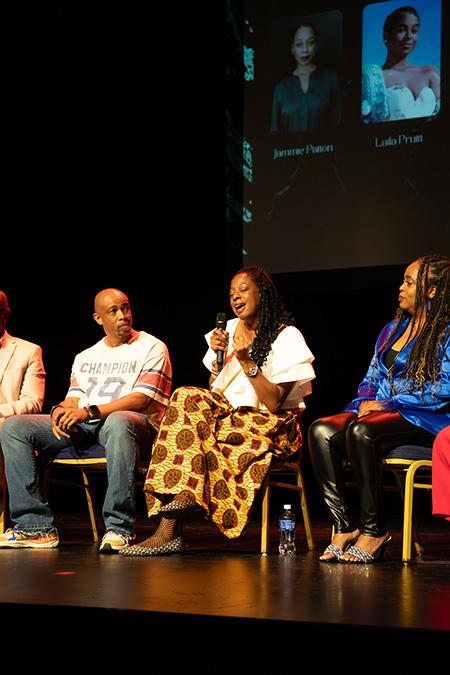
The panel also discussed their own journeys as Black artists and gave advice to the next generation on everything from opening doors for colleagues to dealing with rejection and staying focused on your artistic ambitions.
“The silence,” Jones said about his most surprising lesson as an artist. “And when I say silence I mean for us as artists, dealing with rejection and navigating through that. That is the moment where pressure creates diamonds, because those are moments [when] a lot of times you have to deal with yourself. It’s in those moments where I feel that growth happens.”
For Shavonne, acting intentionally — whether it’s choosing roles, scheduling creative time, or even picking up hobbies — is vital to discovering and staying aligned with one’s artistic purpose.
“I think about what Bill Dukes said, as an artist you have to be willing to fall back and know that there’s no one to catch you,” she said. “You have to be willing to become — to become the craft, become the character, become the director, whatever it is. And there’s a level of deep focus and intentionality to that.”


